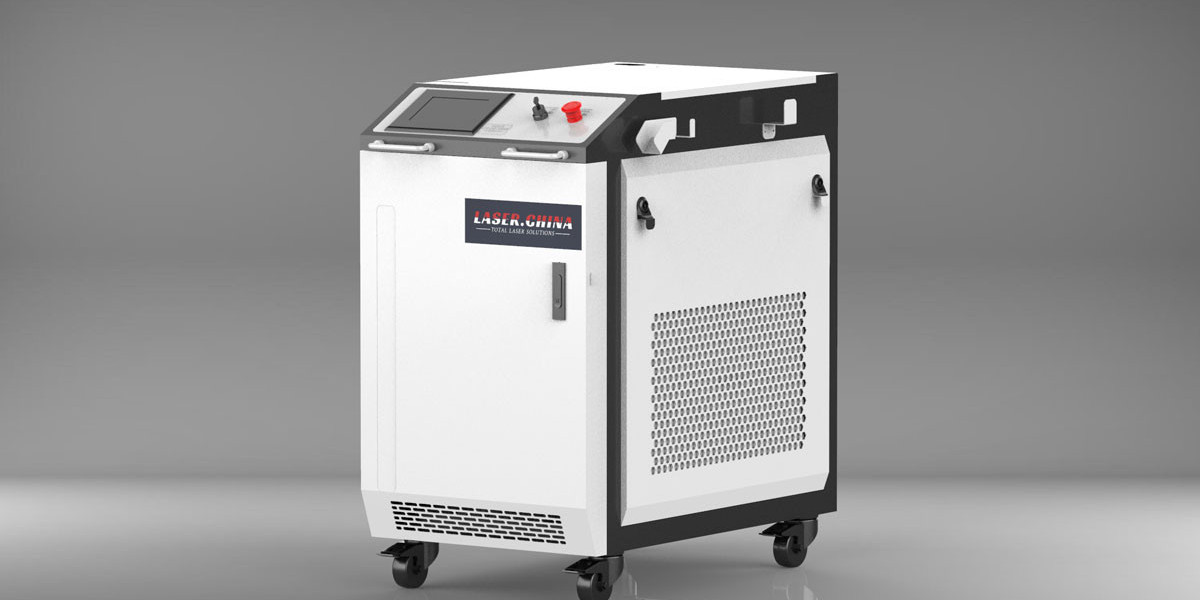Unlike traditional methods like sandblasting, chemical stripping, or mechanical grinding, laser paint remover systems operate with accuracy, cleanliness, and control. The process does not require abrasive media or harmful chemicals, making it not only a cost-effective solution but also a cleaner and safer choice for various industries. Over the years, its application has expanded across automotive restoration, aerospace maintenance, shipbuilding, manufacturing, and cultural heritage preservation.
Understanding the Science Behind Laser Paint Remover
The laser paint remover operates on the principle of laser ablation. A high-intensity laser beam interacts with the surface coating, absorbing the energy and converting it into heat. As the temperature rises, the paint, oxide, or contaminant layer breaks down and vaporizes, leaving behind a clean substrate. The laser’s energy level can be adjusted according to the type of paint and the surface material, ensuring selective removal without damaging the underlying structure.
The process can be controlled with precision using handheld or automated laser systems. The laser beam is scanned across the surface, layer by layer, removing unwanted coatings efficiently. Since there is no contact or friction, there’s no wear on tools or risk of deformation to the base material. The laser paint remover thus provides a consistent and high-quality finish suitable for both delicate and heavy-duty tasks.
Industrial Applications of Laser Paint Remover
1. Automotive Industry
Automotive repair and restoration often require paint removal for bodywork refinishing or part cleaning. The laser paint remover allows technicians to strip paint from metal panels or engine components without sandblasting or chemical solvents. It delivers precise cleaning, ideal for modern car restoration workshops that focus on speed, accuracy, and minimal environmental impact.
2. Aerospace Maintenance
Aircraft structures, especially aluminum and composite materials, require gentle cleaning methods that maintain surface integrity. Traditional paint removal techniques can weaken the metal or leave residues that affect aerodynamics. The laser paint remover provides a non-destructive solution, ensuring smooth removal of coatings without causing micro-cracks or surface degradation. It is frequently used in maintenance depots and manufacturing plants to prepare surfaces for repainting or inspection.
3. Shipbuilding and Marine Repair
Ships undergo continuous exposure to saltwater, leading to corrosion beneath paint coatings. Regular maintenance involves paint stripping and rust removal. The laser paint remover can efficiently clean large metal surfaces without generating toxic waste or secondary pollution, unlike chemical stripping. It’s particularly effective in removing old layers from hulls, decks, and machinery components, extending the service life of marine equipment.
4. Manufacturing and Industrial Equipment
Industrial machinery often accumulates layers of paint, oil, or oxide during prolonged use. Using a laser paint remover enables maintenance teams to restore equipment surfaces quickly, improving operational efficiency. It’s also used for mold cleaning, production line maintenance, and preparing parts for coating or welding processes.
5. Cultural Heritage and Restoration
In art restoration and archaeology, fragile surfaces like sculptures, monuments, or ancient tools require delicate cleaning. The laser paint remover offers adjustable power levels that allow restorers to remove contaminants or modern paint layers without harming the original surface. Museums and conservation labs increasingly rely on laser cleaning technology for precision restoration tasks.
Why Industries Are Switching to Laser Paint Remover
The adoption of laser paint remover systems is not merely a trend—it’s a strategic shift toward cleaner and more sustainable operations. Many industries have realized that replacing outdated methods such as abrasive blasting or solvent cleaning reduces operational costs, minimizes waste disposal challenges, and aligns with global safety standards.
Moreover, the versatility of laser paint remover devices allows companies to handle a wide range of materials, from steel and aluminum to composites and stone. The system can be tailored to match the exact removal depth, making it suitable for both surface preparation and complete stripping. Operators appreciate the easy setup and minimal maintenance requirements, which streamline workflow and reduce downtime.
Laser paint removal also ensures a healthier working environment. Since the process produces minimal dust and fumes, workers are less exposed to harmful particles and chemicals. The lack of abrasives or solvents significantly cuts down on waste management costs, while the precise nature of laser cleaning contributes to energy efficiency and material conservation.
Technological Advancements in Laser Paint Removal
Modern laser paint remover systems incorporate advanced features such as fiber laser sources, automated scanning heads, and intelligent monitoring software. These innovations improve energy efficiency, beam stability, and surface recognition.
For instance, fiber lasers have become the preferred choice due to their long operational lifespan, compact design, and consistent beam quality. Automated systems with robotic arms or CNC controls further enhance productivity by performing uniform cleaning on complex geometries or hard-to-reach areas.
Digital interfaces allow real-time monitoring of temperature, energy levels, and removal depth, ensuring consistent quality control. The integration of cooling systems and precise optical focusing mechanisms helps maintain consistent performance even during prolonged operation. As technology evolves, laser paint remover machines continue to become more powerful, user-friendly, and versatile.
Environmental Impact and Workplace Safety
Environmental protection has become a key factor in industrial decision-making. Conventional paint removal methods often generate hazardous waste, airborne dust, and chemical residues. The laser paint remover, by contrast, eliminates the need for solvents and abrasives, significantly reducing environmental pollution.
The process generates only minimal fumes, which can be safely filtered using standard extraction systems. This eco-friendly approach aligns with modern sustainability goals and complies with strict environmental regulations in manufacturing, aerospace, and marine industries.
From a safety standpoint, operators benefit from reduced physical strain, as the process requires no mechanical scraping or blasting. Proper protective gear and controlled enclosures ensure safe operation even in high-power laser environments. Many workplaces now integrate laser paint removal as part of their green manufacturing initiatives.
The Growing Demand Across Global Markets
The rising demand for laser paint remover technology reflects a broader industrial shift toward automation and clean production. Companies in Europe, Asia, and North America are adopting these systems for large-scale maintenance, refurbishing, and surface preparation projects.
Governments and corporations increasingly support eco-friendly technologies that reduce emissions and waste. Laser cleaning solutions are gaining recognition for meeting international standards while improving productivity and cost-efficiency. This technology’s adaptability across different sectors has made it one of the most promising tools in surface engineering and maintenance.
Final Thoughts
The laser paint remover stands at the intersection of innovation, precision, and sustainability. Its growing presence across multiple industries highlights its reliability and adaptability. By combining efficiency with environmental consciousness, it represents the future of surface cleaning and restoration technology. As industries continue to evolve, those embracing laser-based systems position themselves for cleaner, safer, and more efficient operations in the years ahead.








